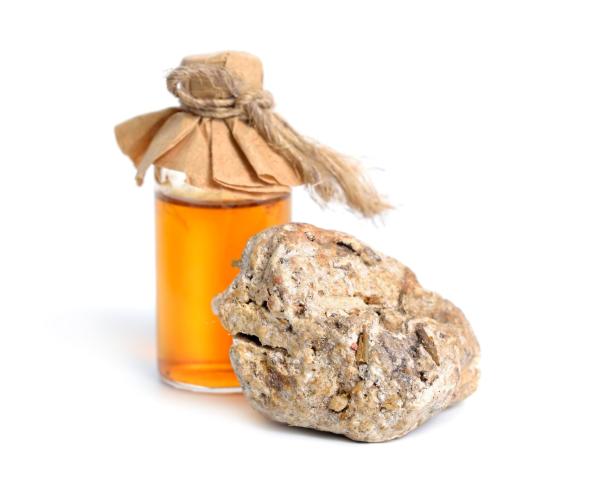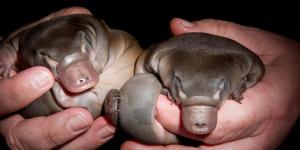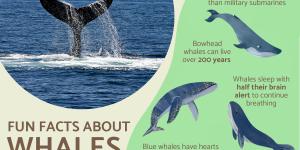What Is Whale Vomit or Ambergris?


Whale vomit, also known as ambergris, has been a mysterious and highly sought-after substance for centuries. Found in the digestive systems of sperm whales, ambergris is a waxy, greyish material that has a unique scent and fixative properties that make it a prized ingredient in the perfume industry. Despite its use in perfumery, ambergris has a controversial history, with the whaling industry almost driving the sperm whale to extinction.
In this article from thedailyECO, we'll explore the fascinating world of whale vomit or ambergris, including its history, properties, and current uses.
What is whale vomit or ambergris?
Ambergris is a substance that is produced in the intestine of the sperm whale (Physeter macrocephalus). Although it was historically believed to be vomit, it is now understood that ambergris is either regurgitated or excreted by the whale. Despite this, the term "whale vomit" is still sometimes used as a colloquial name for ambergris.
Ambergris has been a fascinating natural wonder for thousands of years, with fossil evidence dating back 1.75 million years and indications of human use for over a millennium. It has been referred to as "floating gold" and the "treasure of the sea."
For years, the origin of ambergris was a mystery and various theories were proposed, including that it was solidified sea foam or the excrement of large birds. However, it wasn't until the 1800s, when commercial whaling became widespread, that it was discovered that ambergris is produced solely by the sperm whale (Physeter macrocephalus).
Although the formation mechanism of ambergris is still uncertain, but it is believed to be produced as a means to facilitate the ingestion of hard and sharp objects. Sperm whales consume large amounts of cephalopods such as squid and cuttlefish, and the undigested parts of their prey, such as beaks and pens, are often regurgitated before digestion.
Under exceptional circumstances, however, these indigestible parts can bypass the whale's digestive system and accumulate in its intestines, where they gradually agglomerate and solidify over time to form a unique substance known as ambergris. This process can take several years, and the resulting mass of ambergris can grow to considerable size.
Ambergris has a unique appearance with a globular, greasy, and waxy texture and is generally blackish, grayish, or yellowish in color. When it is excreted, it has a pale color, soft consistency, and unpleasant odor, but as it spends time floating in the ocean, it gradually oxidizes and hardens, and its odor becomes soft and pleasant.
Ambergris is typically discovered in various shapes and sizes, ranging from 15 grams (1/2 ounce) to over 50 kilograms (110 pounds) in weight.
Where is ambergris found?
Sperm whales are found in many parts of the world, including the Indian Ocean, the Pacific Ocean, and the Atlantic Ocean. Therefore, ambergris can be found in various regions of the world, including the coasts of Africa, Asia, Europe, the Americas, and some Pacific Islands.
Discover the distribution of other famous cosmopolitan animal species by reading on this other article.

What is whale vomit currently used for?
Ambergris has been prized in the perfume industry for centuries due to its distinct scent and ability to enhance fragrances. Its fixative properties make it ideal for making scents last longer, and while synthetic compounds have been developed as substitutes, they are not considered to be perfect replacements.
Historically, ambergris has been used as a spice and flavoring agent in some cultures and was believed to have medicinal properties. However, there is little scientific evidence to support these claims, and its use for medicinal and culinary purposes is not widely accepted today.
Due to ethical concerns and regulations, the use of ambergris in food and drink is not common in modern times. Restrictions on its use have been put in place due to its rarity and the potential harm to marine life from its extraction. Its rarity and ethical concerns surrounding its extraction make it a controversial material, and alternatives are often preferred.
As previously stated, squid and cuttlefish are prominent components of the sperm whale's diet. If you're interested in discovering more about the distinctions between these two creatures, check out our related article.

Why is whale vomit so valuable?
As mentioned before, ambergris is a highly prized substance in the perfume industry due to its unique fragrance and fixative properties. Its rarity and difficulty to obtain, coupled with its inability to be fully replicated in the laboratory, make it an expensive and sought-after material. High-end luxury perfume brands use ambergris to create some of their most expensive fragrances, with its price often being compared to that of gold.
Perfumers have been using ambrein, an odorless alcohol extracted from ambergris, to extend the lifespan of a perfume's scent for centuries. The quality of ambergris has long been assessed by perfumers based on its color, with pure white varieties considered the highest quality for producing the finest perfumes. Black ambergris, on the other hand, is less valuable due to containing less ambrein.
During the 18th to mid-19th century, the whaling industry flourished, with reports indicating the killing of nearly 50,000 whales annually, including the sperm whale. The pursuit of profit through the extraction of oil, whalebone, and ambergris led to the killing of millions of whales, ultimately endangering the species.
Nowadays, the commercialization of ambergris is prohibited in the United States due to conservation efforts aimed at protecting the sperm whale. The sperm whale is classified as a vulnerable species on the IUCN (International Union for Conservation of Nature) Red List.
While whaling for sperm whales has been banned since the 1980s, the species still faces various threats, including accidental entanglement in fishing gear, habitat degradation, and pollution.
Various international agreements, such as ACCOBAMS, have been put in place to promote the conservation of cetaceans in the Black Sea, Mediterranean Sea, and contiguous Atlantic area, including the sperm whale.
You might be interested in this other article, where we delve in the issue of plastic pollution in our oceans. We'll delve into the causes and consequences of this global problem, as well as potential solutions.
If you want to read similar articles to What Is Whale Vomit or Ambergris?, we recommend you visit our Facts about animals category.
- Fernández-Casado, M. (2000). The sperm whale ( Physeter macrocephalus ).
- Red Lists of the International Union for Conservation of Nature. Available at: https://www.iucnredlist.org/







